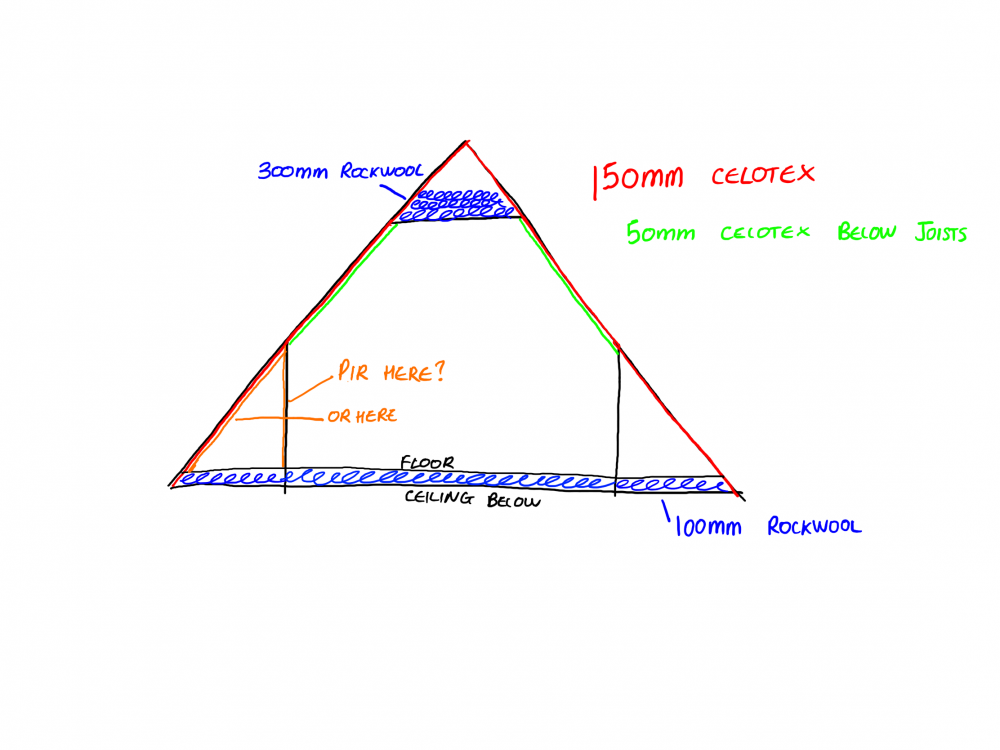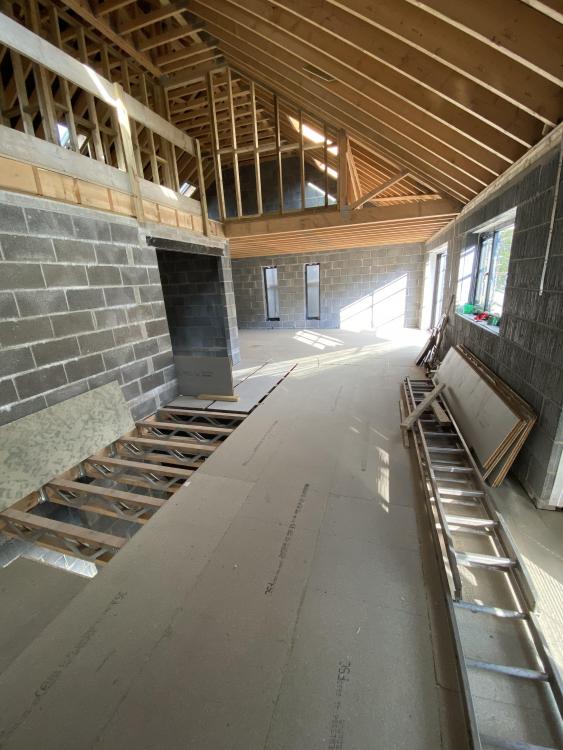
Evs
Members-
Posts
42 -
Joined
-
Last visited
Recent Profile Visitors
The recent visitors block is disabled and is not being shown to other users.
Evs's Achievements

Member (3/5)
5
Reputation
-
Hi guys, have anyone got experience of both or would recommend one or the other? If I get the premier elite, I’ll have all the PIR’s wired but was then going to get the wireless add on and smart com to make it a hybrid system. Therefor I could add on wireless door/window contacts and alarm and disarm the system remotely off my phone. Which makes me think it would be best to just get the ricochet system so its already all wireless. I’m just thinking that it may be a nuisance changing batteries in everything, but then again I’m not entirely sure how long the batteries will last. Its if just an annual task then that would be fine.
-
Building control finally got back to me today. The BCO said that 120mm between the rafters and 20mm below will be sufficient and thats what he always says to install. I didn’t argue with him but on the celotex U value calculator is says 150mm between and 50mm below will be required to achieve a U value of 0.15. I could go ahead and do this but then if I have to prove that this will achieve the 0.15 U value, then I can’t.
-
This is my other dilemma, do I run cat5 or cat6 cable?
-
I can’t use any of the roof space at either side of the attic rooms. Can’t cut the trusses and they’re at 400mm centres so can’t get anything in between them anyway. I’ve got a bit of room above the attic roof that I can use for storage. If I use PIR insulation, I was going to run in between the joists and then at right angles all the way through, then fit some battens behind the upright bits and put 100mm of rockwool behind the plaster board. I’ve got 15 spot lights in the big vaulted ceiling, I was wondering what do about the spots as I’d have to cut holes through the PIR if I use that.
-
I’ve only only seen this reply somehow. Thank you for taking the time to do this. I’m still not sure whether I can fully insulate the trusses with 200mm of glasswool or I have to leave the 50mm air gap.
-
I totally forgot about the soundbar and sky haha. Ah I see what you mean. When running the cables to the TV then for example, would you run the cables out through a brushed socket or install 4 port patch socket? Obviously depending where the connection is on the back of the tv or soundbar then I need to be able to pull slack down to connect it into the device. Where as if I put a patch socket in then I can just make up cables to the right length and connect them straight into the socket?
-
Thanks for the reply. Why so many to each location and 4 to the tv? In case of a breakdown in one cable or so I can have more ports at each location? Also what would be the benefit of wiring them back to a patch panel rather that directly to the switch? I I’ve already been looking at the racks actually, definitely going install one.
-
I’m looking to install some home networking in my house, I’ve been doing some research but the more video’s I watch or articles I read it just goes deeper and deeper, then I find myself going way too indepth for what I actually need lol. This is what I’m trying to achieve: I want to put a data point in every bedroom (there are 4 bedrooms ) for tv’s & games consoles etc. I will be using NVR cctv so my recorder will need a hard wired connection. Data point in the office. Other data points for wifi access points. Therefor I know I need: modem - router - switch - patch ports in every room linked back to the switch. Can anyone tell me if I’m missing anything and can point me in the direction of some good brands that they have used? In regards to the modem and router, are the ones providers use up to the job or am I better off supplying my own?
-
I’m just calculating the amounts of materials I’ll need so I can work out some price comparisons. Would someone be able answer this for me please? I’ll just use celotex PIR for example. I need to put 150mm between the rafters and then 50mm below. I know I need to do this in the vaulted area and all the pitched part of the roof in every attic room but do I need to do this in these area’s I’ve pointed towards in the drawing? Sorry for the poor sketch lol. The 300mm rockwool is what the architect has put on my plans for above the flat ceiling in the attic. I won’t need that much if I can take the 150mm PIR all the way to the apex of the roof. I’ve spoken to Knauf, they said to use 150mm of loft roll 32 between the rafters and 75mm PIR below.
-
Sorry, I didn’t realise I hadn’t replied to you in my last post. Nothing is silly, I’m open to all solutions and I appreciate all the help. I haven’t had chance to do any cost comparisons between the methods mentioned above, will get it done one evening this week though and I will reply with my answers. I need to ring my roofing materials supplier tomorrow to find out exactly what membrane I have. I’ve also got to add a vapor barrier to the vaulted part of the ceiling, surely this a bit of overkill with the amount of insulation I’ll be using in the roof?
-
Someone else mentioned this stuff to me but it will add a lot onto the cost of materials tbh. Although they’re all off on the sick, for some reason this is usually the thing all the BCO in my athority are obsessed with so I just wan’t clafication more than anything before I start ordering materials. I have got breathable membrane in the roof actually as its a slate roof. Another 50m?! Calc I used online said 120m and 37.5mm (25mm insulation on the plaster board) would have achieved it. Thank you for that reply. I looked at knauf earthwool but like you say I’d have to really increase the PIR. In the vaulted part of the ceiling I have plenty of room to lose some height but in the bedroom, ensuite and gallery area, not so much. I also looked at using celotex between the rafters then superquilt ontop, then batten ontop of the superquilt and fix standard plasterboards to the battens. I need to work out what thickness of each I’d need, how much head height I’d lose and obviously the cost of this method.
-
Yeah its a lot of space to insulate and yeah I’m going to do it myself too ?. Worked it out, I need 30 sheets of 100 or 120mm insulation boards. I’ve pictured everything so far, its an absolute shambles I can’t get a building control officer to site. Even other local authorities are refusing to take on my local area’s work so we literally have no one to speak to or to inspect it. This is due to the thermal bridging of the trusses? Thanks for the replies both.
-
Hi guys, I’m after some advice on what insulation to use in my roof. Its quite a ridiculous situation to be in but my local council have no building control offices in, all 4 of them are on the sick, 5 out of the 6 planning officers are also on the sick. I can’t get a building officer to come to site and they have turned all the phones off and we have to send emails which they will reply to when they can.. which as you can imagine is basically never and I can’t get hold of my architect as he’s away for a few weeks. I’ve got 8” trusses fixed at 400 centres and I have to allow a 50mm air gap and also lay a vapour barrier in the vaulted part of the roof. The U value has to be <0.15. It was recommended to use 100 or 120mm celotex insulation then use 37.5mm insulated plaster boards over that to achieve the u-value. I’d rather not have to use insulated plaster boards unless I have to as I’m trying to keep the cost down, as everyone else can probably relate the cost of materials is through the roof and we’re going over budget, so trying to find the cheapest alternatives where possible. Here’s the vaulted ceiling.
-
Thats a hole to be proud of. I’ve got to dig a hole for a 32 cubic metre attenuation tank if you fancy it ?.
-
Western power.



